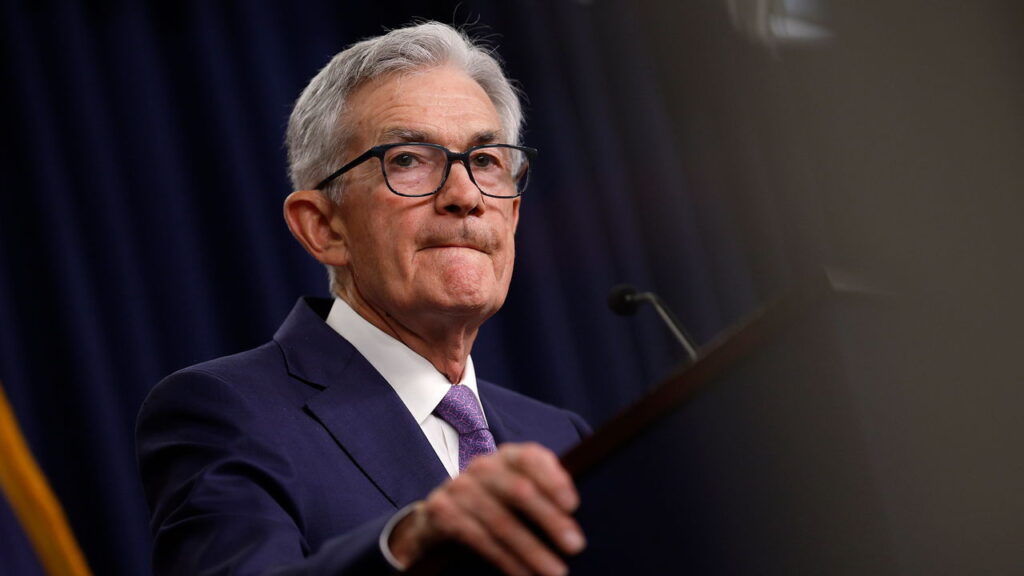The long-awaited moment for investors and financial markets is drawing near, as shifts in monetary policy by America’s Federal Reserve are anticipated. For the past two and a half years, since the Fed commenced its aggressive series of interest-rate hikes—the most rapid since the 1980s—market participants have been seeking any indications regarding a potential reversal of this trajectory. The discussion has been fervently ongoing, with speculations and analyses proliferating as the date of the Federal Open Market Committee (FOMC) meeting approaches. Scheduled for September 18th, this gathering has become a focal point for investors, economic analysts, and policymakers alike.
Leading this pivotal meeting is Jerome Powell, the Chair of the Federal Reserve, who has consistently been in the spotlight as rates have climbed in response to inflationary pressures. Powell’s communication style and the messages conveyed during such meetings are scrutinized intensely, not just for their immediate implications, but also for the broader economic health of the United States. If Powell does not announce an initial rate reduction during this upcoming meeting, it would defy the general market expectations, which have been building steadily.
The conversation among traders has shifted noticeably; it has moved from questioning whether a rate cut will occur to debating the extent of the cut itself. This change signifies a growing confidence or at least a strong anticipation for some form of reduction in interest rates. Current market pricing suggests a significant 40% probability that the Federal Reserve will opt for a modest cut of 0.25 percentage points. However, another segment of traders believes the central bank might be more aggressive, assigning a 60% chance to a 0.5 percentage point reduction. This divergence reflects varied sentiment around inflation data, economic growth indicators, and overall market conditions.
Analyzing these probabilities, it becomes evident that the financial landscape is at a tipping point. A reduction in the Federal Reserve’s policy rate, now positioned between 5.25% and 5.5%, could set off a chain reaction throughout the economy. Lower rates might lead to cheaper borrowing costs for consumers and businesses, ultimately stimulating spending, investment, and economic activity. Conversely, the timing and magnitude of such cuts are crucial, as officials must remain vigilant in monitoring inflationary pressures that could resurface if the economy overheats following rate reductions.
Furthermore, the implications of a rate cut extend beyond just short-term market reactions. They can affect longer-term strategies for both institutional and individual investors. As rates have been on the rise, many have adjusted their portfolios, favoring fixed-income securities, cash holdings, and alternative investments to hedge against uncertainty. However, a shift toward lower rates could compel investors to re-evaluate their strategies, potentially leading to increased equity exposure and a renewed interest in growth-oriented sectors of the market. The dynamics here are multifaceted, intertwining investor sentiment, central banking policy, and broader economic trends.
In summary, the upcoming FOMC meeting on September 18th is set to be a significant event in the context of U.S. monetary policy. With the anticipation surrounding Jerome Powell’s potential announcement concerning interest rates, many are closely watching the signals and data in the lead-up to the meeting. The transition from questioning the likelihood of a rate cut to debating its scale reflects a critical evolution in market sentiment. As the global economy grapples with an array of uncertainties, from inflationary pressures to geopolitical tensions, the Fed’s decisions will undoubtedly have repercussions that extend well beyond the trading floors of Wall Street—impacting everyday consumers, businesses, and the broader economic landscape.
In closing, regardless of the outcome, the central bank’s forthcoming decision will shape expectations and decisions across various sectors, emphasizing the importance of effective communication in conveying the rationale behind any policy shifts. The convergence of speculation, market dynamics, and broader economic indicators will all play a role in determining the trajectory of U.S. monetary policy in the months and years to come.



